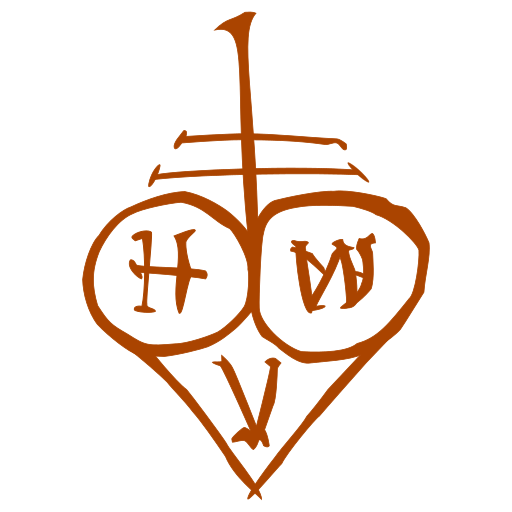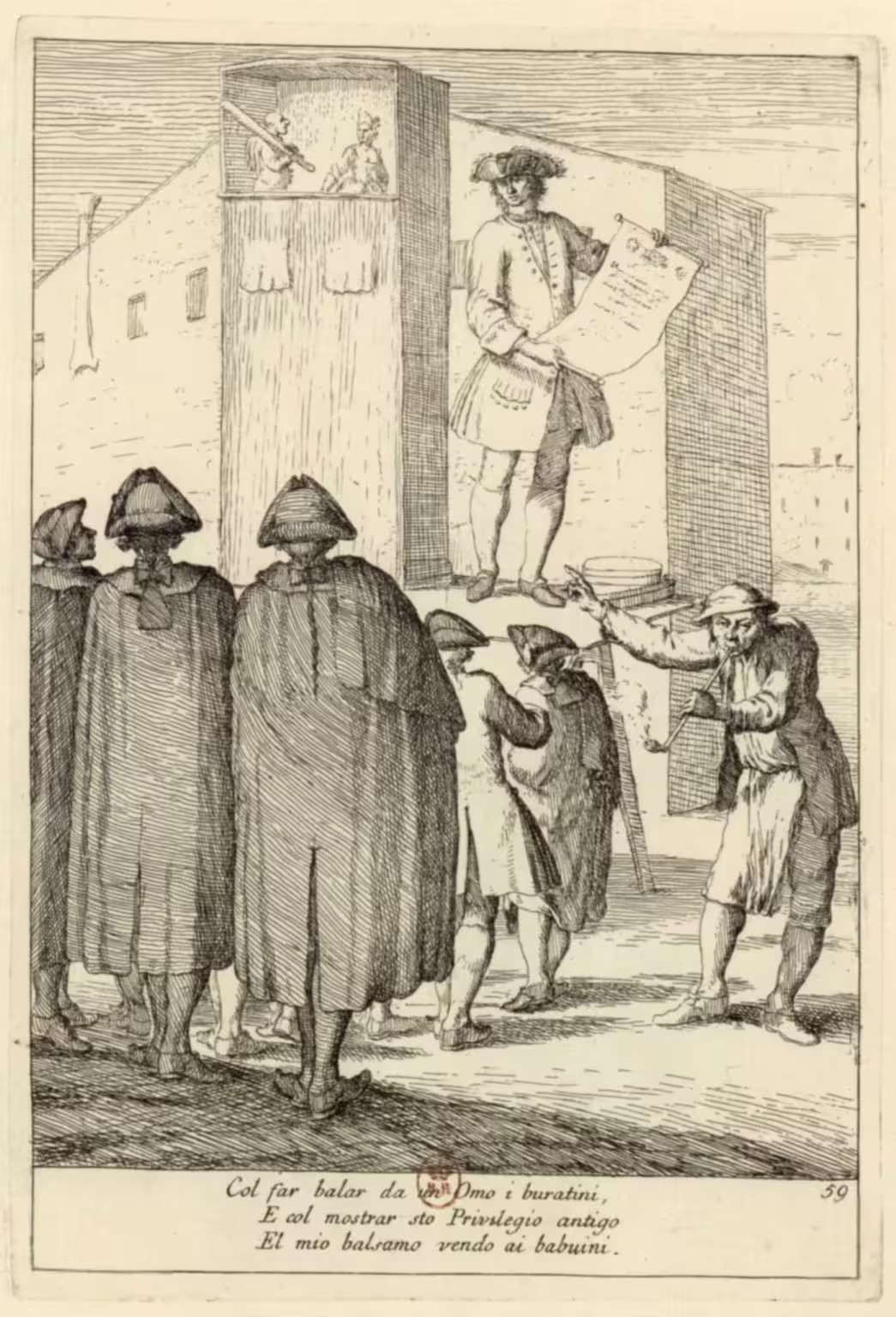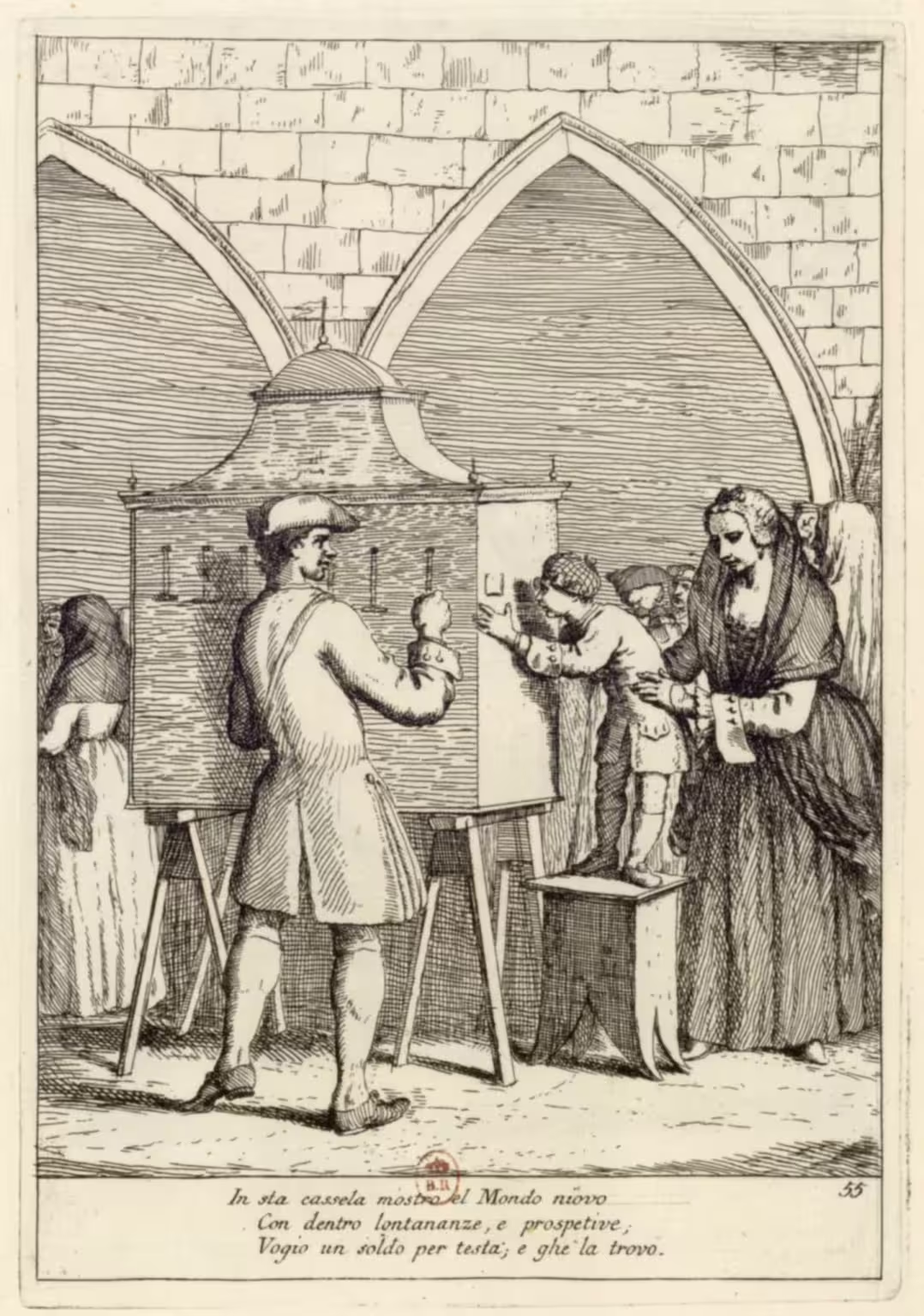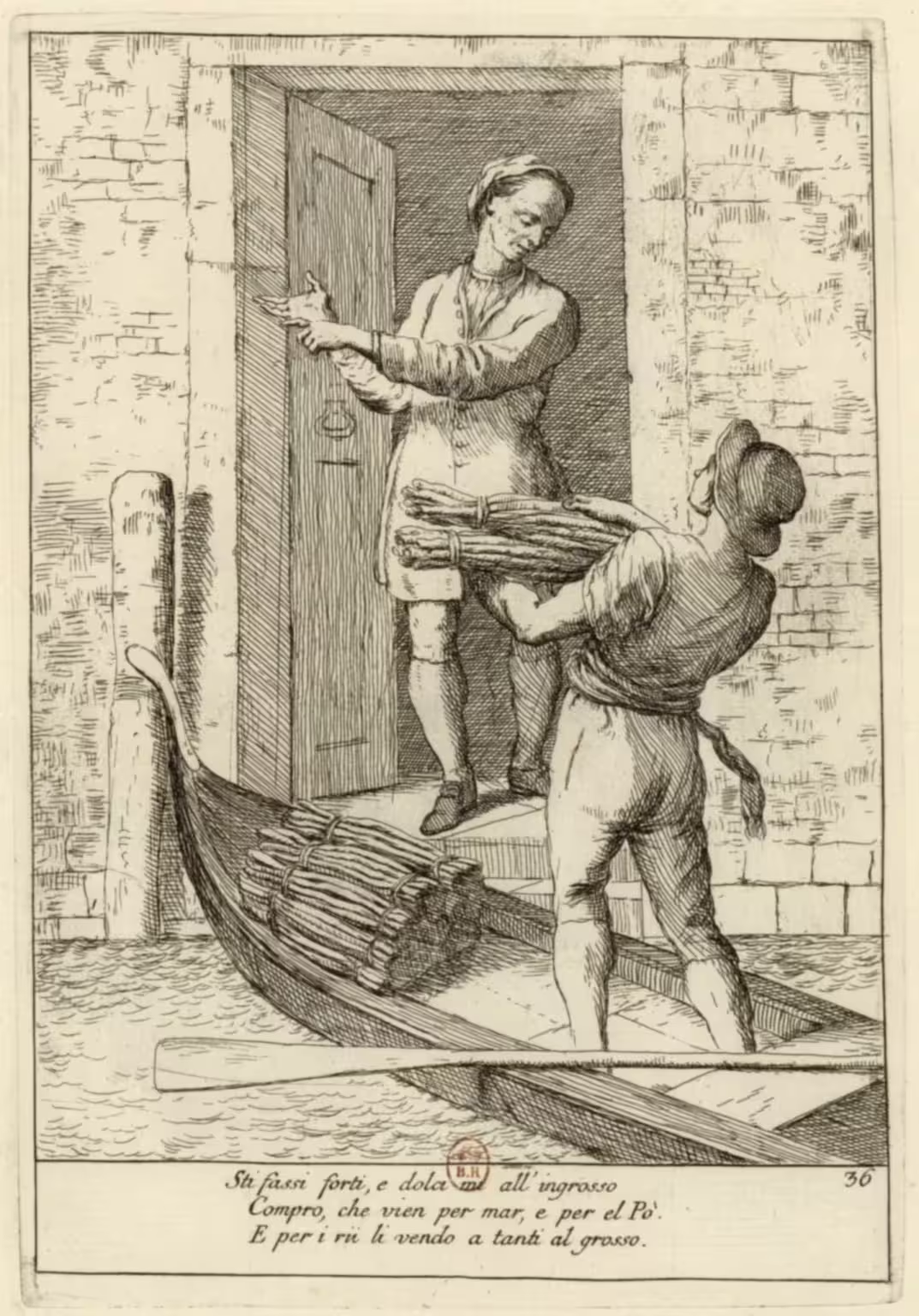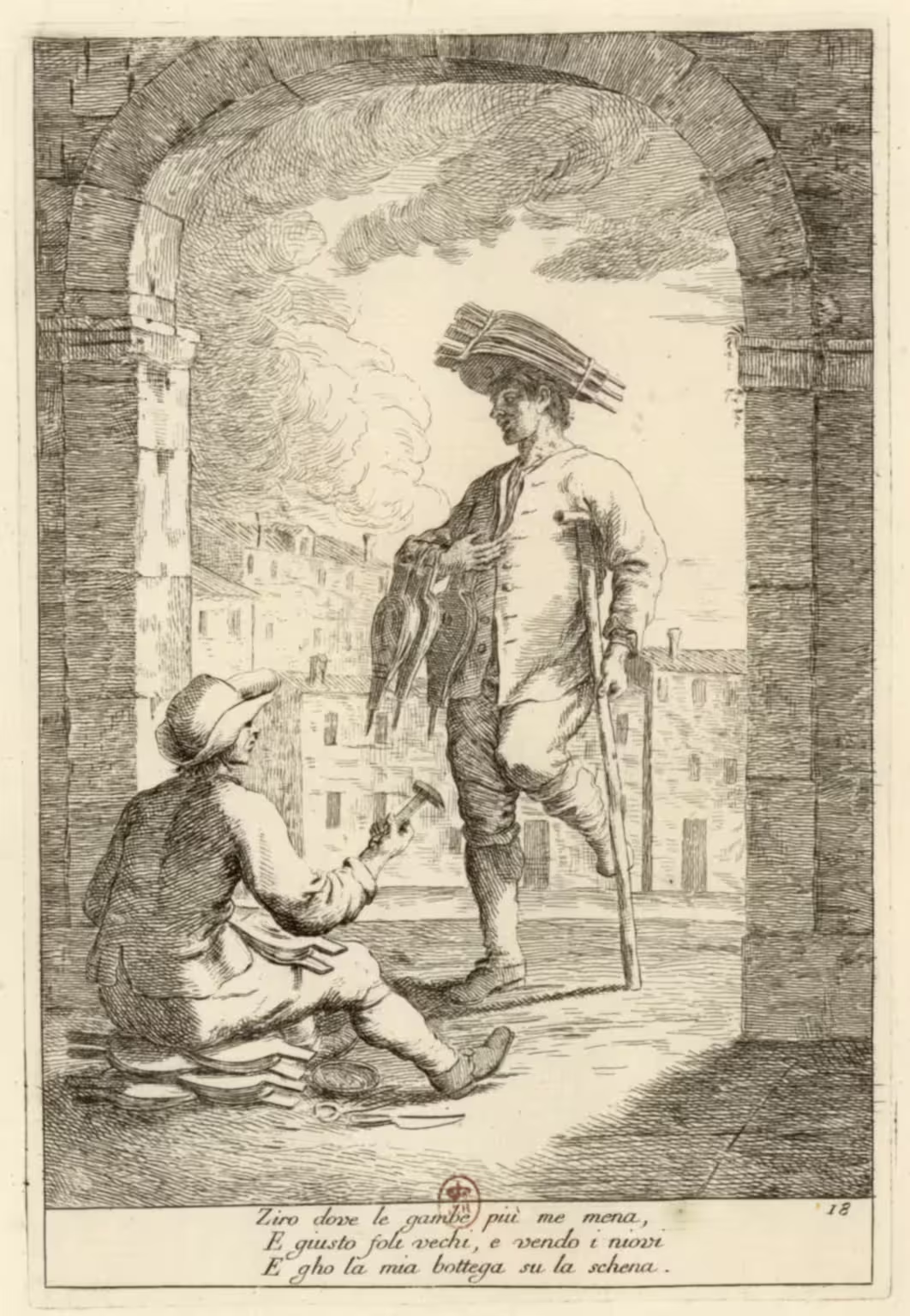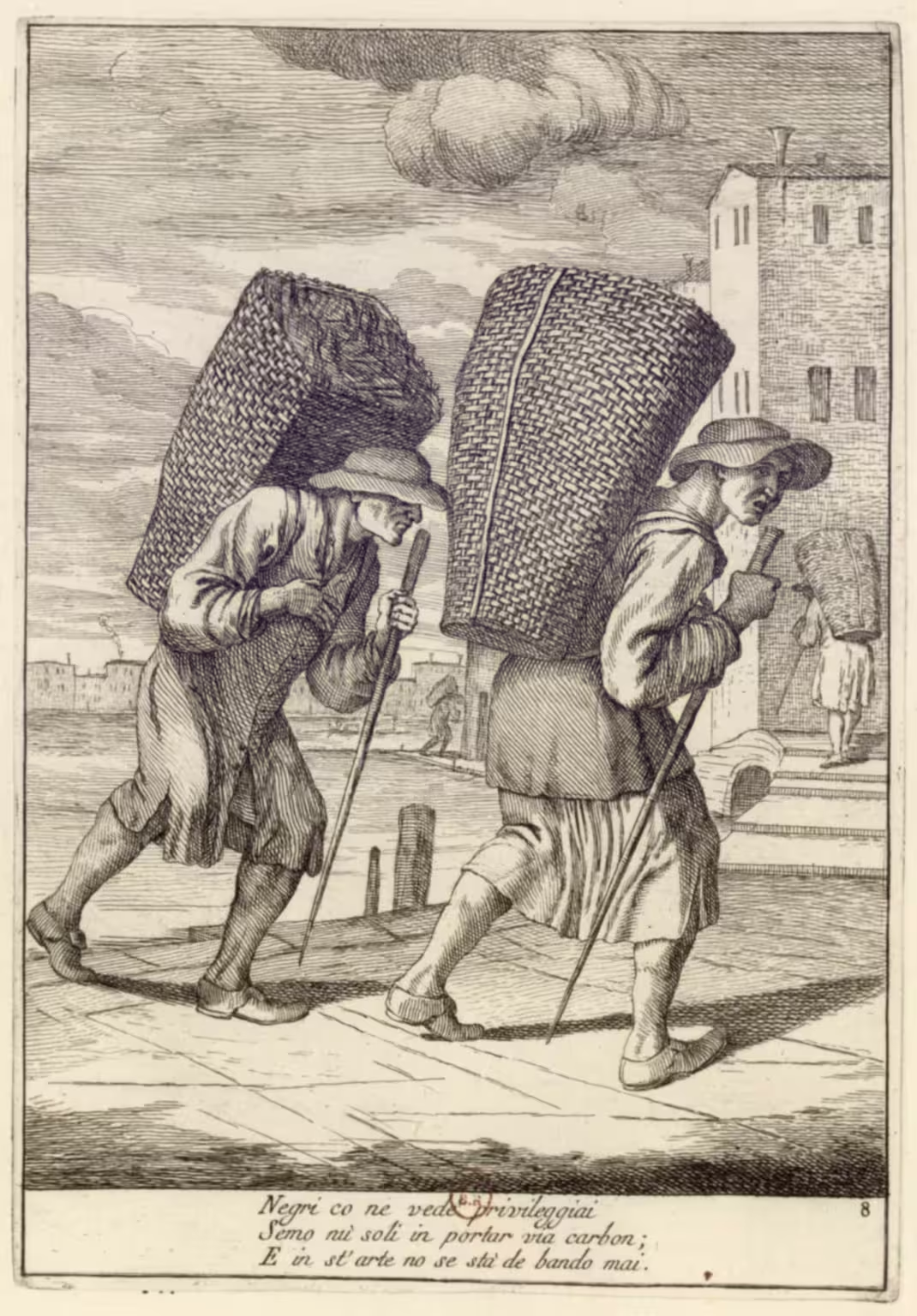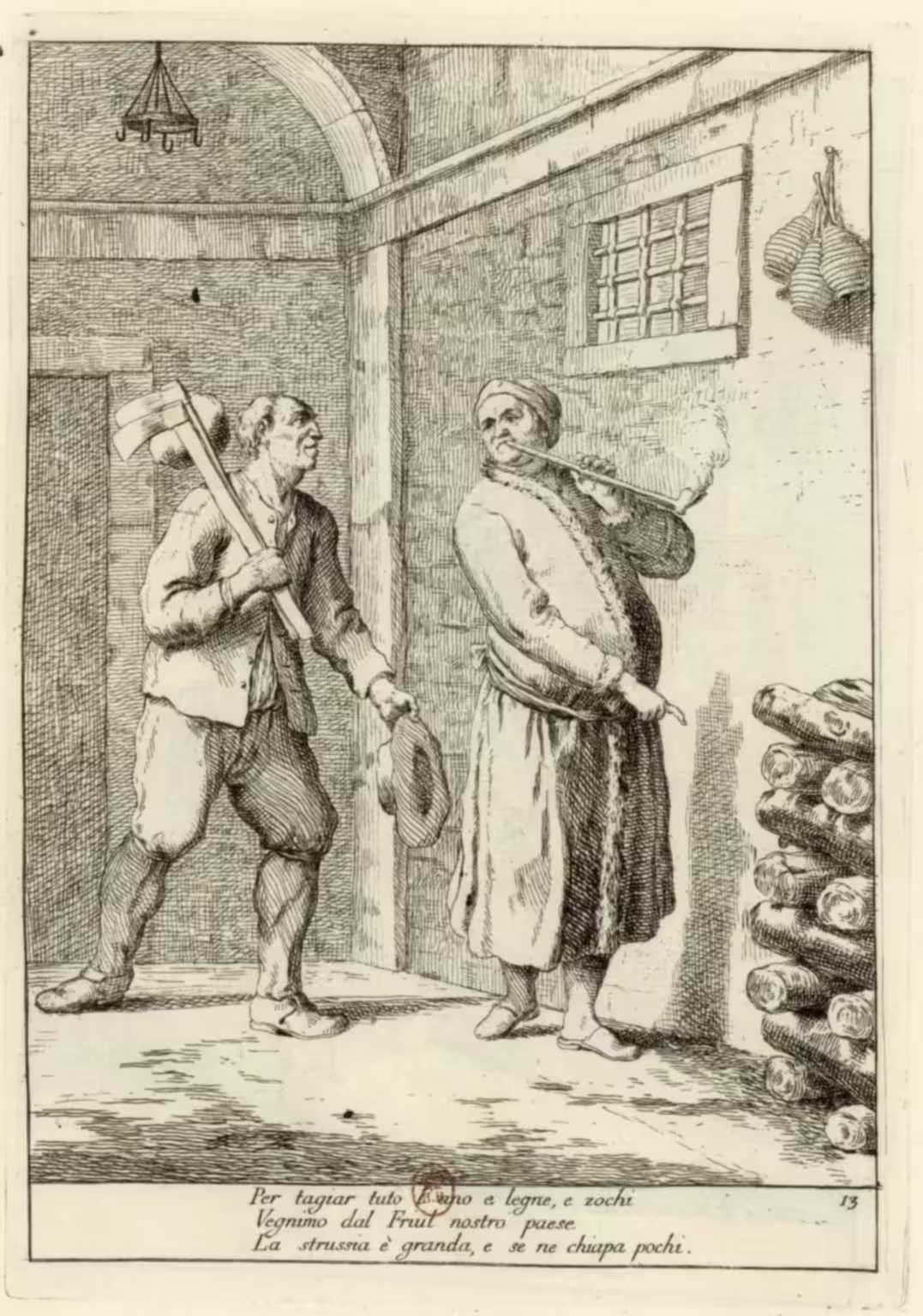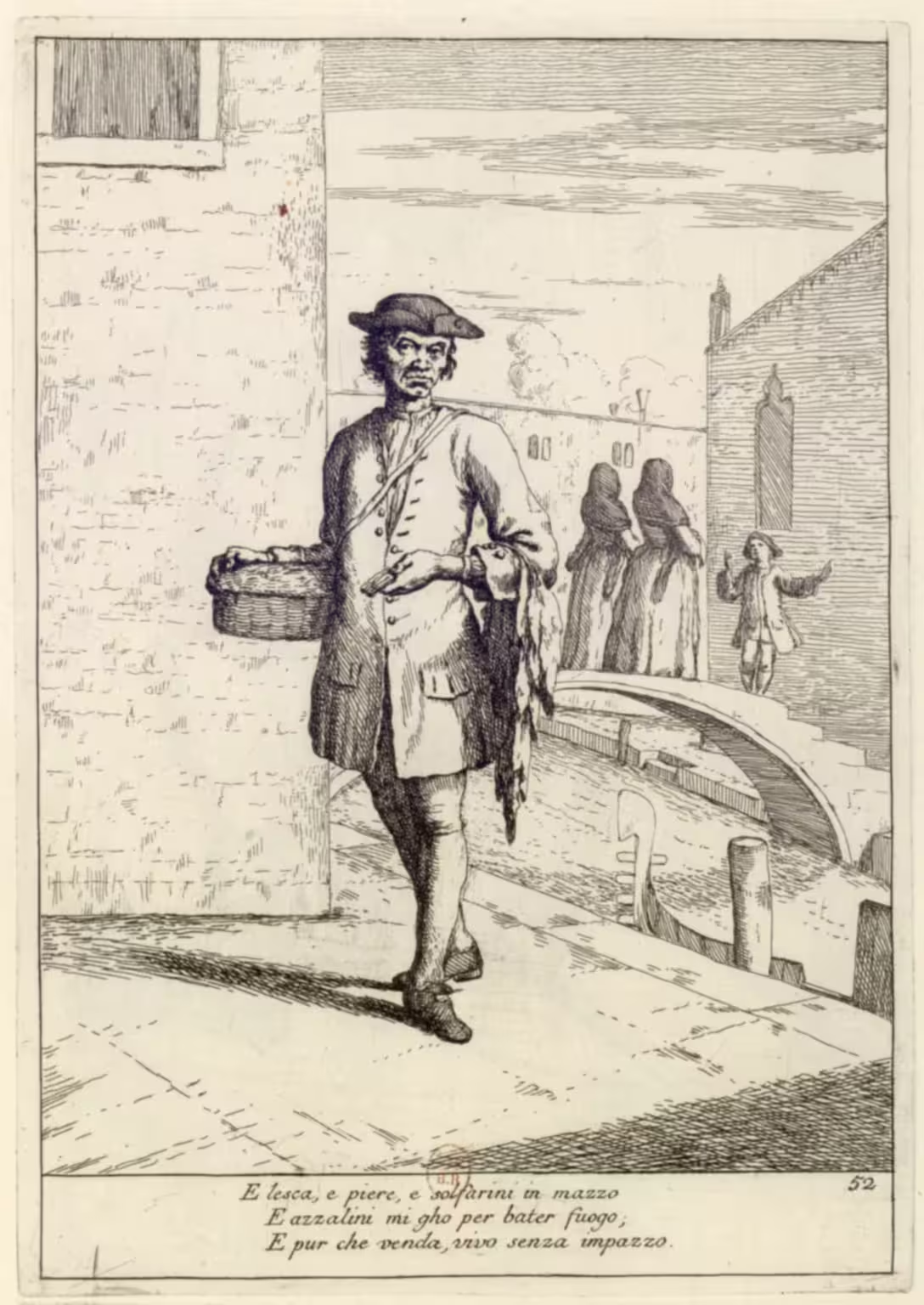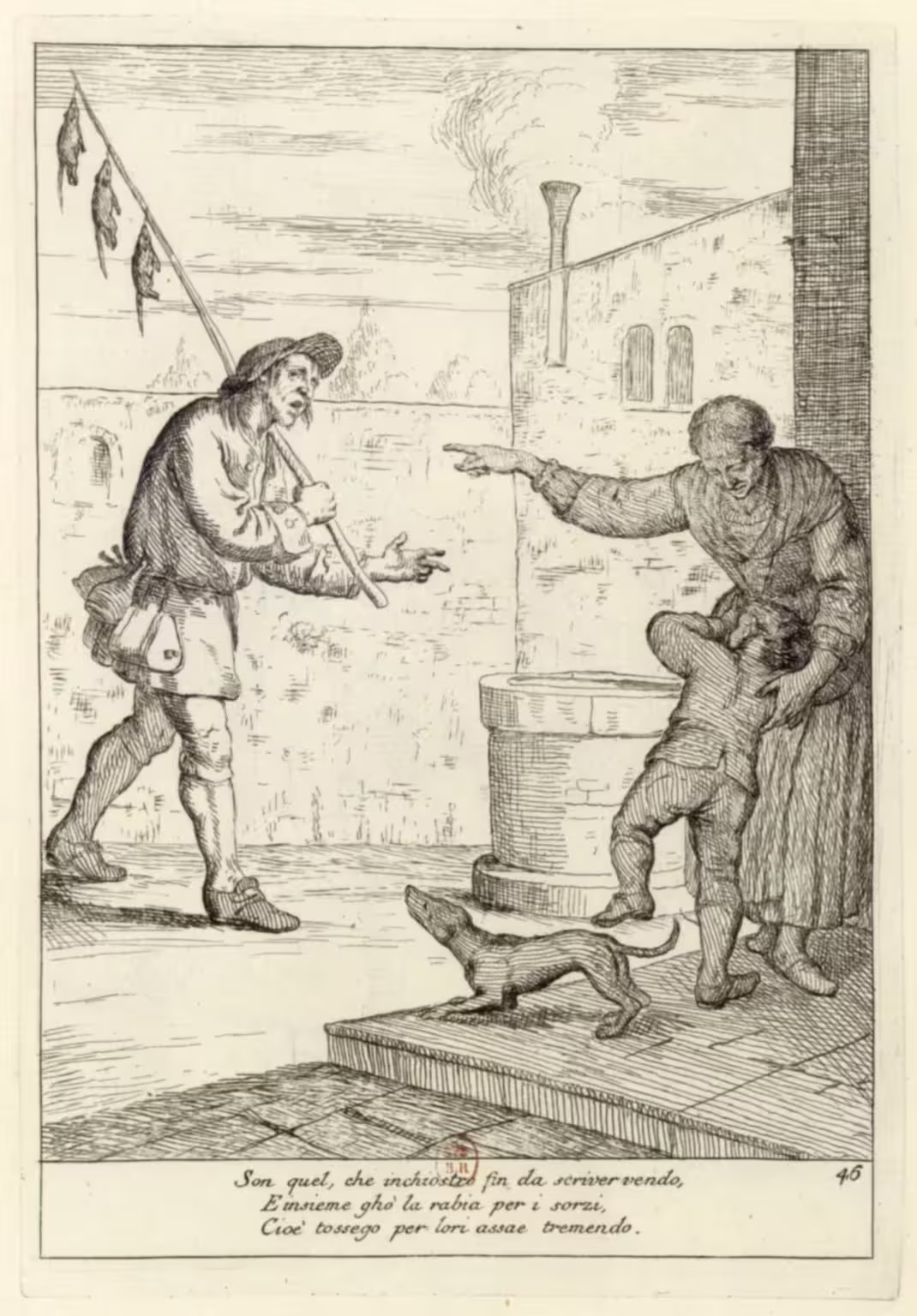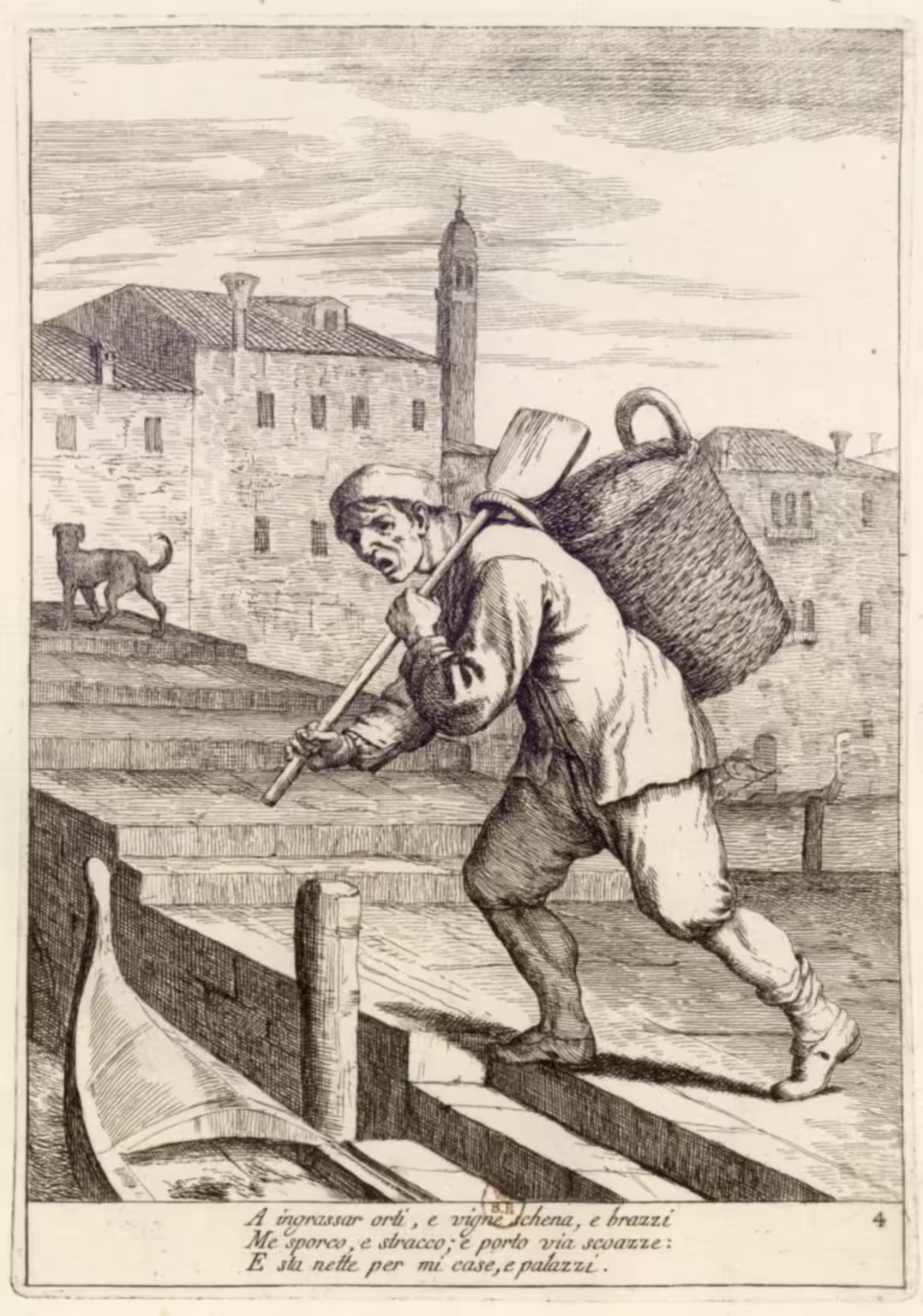The writings on this site are split into several categories, but they’re all listed here together, chronologically, newest first.
The categories are articles, blog posts, lists and translations from various sources.
Almost everything is cross-referenced by names of persons and institutions, by location, and even by bibliography. There is also a glossary of Venetian terms with references.
The podcast and newsletter are on the Venetian Stories website.
-
Zaratan — charlatan, snake-oil salesman — Zompini — Arti #59
“Zaratan” (charlatan, snake-oil salesman) from “Arti che vanno per via” (1785) by Gaetano Zompini, translated by René Seindal.
-
Astrologa — Fortune-teller — Zompini — Arti #43
“Astrologa” (Fortune-teller) from “Arti che vanno per via” (1785) by Gaetano Zompini, translated by René Seindal.
-
Mondo Novo — peep box operator — Zompini — Arti #55
“Mondo Novo” (peep box operator) from “Arti che vanno per via” (1785) by Gaetano Zompini, translated by René Seindal.
-
Fassi per battello — vendor of bundles of wood by boat — Zompini — Arti #36
“Fassi per battello” (vendor of bundles of wood by boat) from “Arti che vanno per via” (1785) by Getano Zompini, translated by René Seindal.
-
Dai Foli — Bellows seller — Zompini — Arti #18
“Dai Foli” (Bellows seller) from “Arti che vanno per via” (1785) by Getano Zompini, translated by René Seindal.
-
Carboneri — transporters and sellers of charcoal — Zompini — Arti #8
“Carboneri” (transporters and sellers of coal and charcoal) from “Arti che vanno per via” (1785) by Getano Zompini, translated by René Seindal.
-
Taggia Legne — wood-cutter, chops firewood — Zompini — Arti #13
“Taggia Legne” (wood-cutter, chops firewood) from “Arti che vanno per via” (1785) by Getano Zompini, translated by René Seindal.
-
L’Esca, e Solferini — street seller of tinder, matches and flint — Zompini — Arti #52
“L’Esca, e Solferini” (street seller of tinder, matches and flint) from “Arti che vanno per via” (1785) by Getano Zompini, translated by René Seindal.
-
Inchiostro — vendor of ink and rat poison — Zompini — Arti #46
“Inchiostro” (vendor of ink and rat poison) from “Arti che vanno per via” (1785) by Getano Zompini, translated by René Seindal.
-
Scoazer — rubbish collector — Zompini — Arti #4
“Scoazer” (rubbish collector) from “Arti che vanno per via” (1785) by Getano Zompini, translated by René Seindal.
